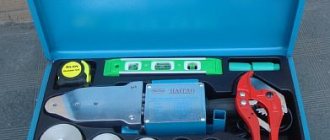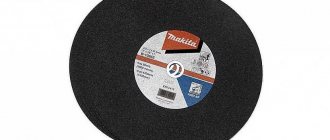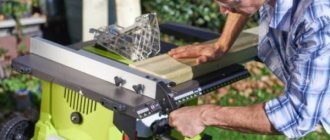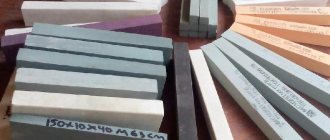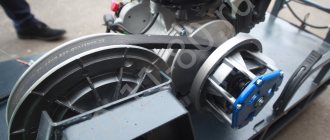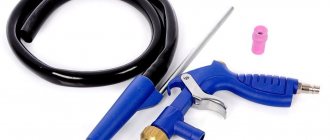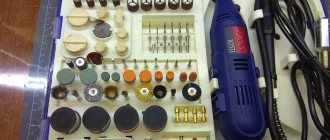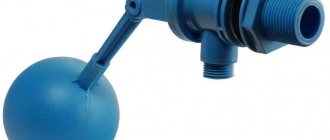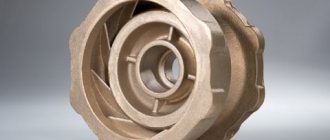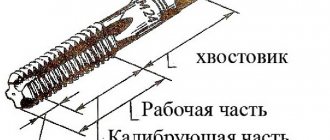Pipe rolling (also known as “rolling”) is a special technological procedure during which the original product (usually a pipe) is subjected to deformation to obtain a certain shape. During such deformation, it is possible to preserve the material itself, which distinguishes this procedure favorably from turning or milling operations.
The rolling process itself may include the following actions:
- The cross-section of the pipe varies in diameter;
- The part is bent radially or at an angle;
- An unnecessary gap is eliminated between the pipe bender and the expanding edge (the action is called “beading”);
- In order to connect two pipes telescopically (inserting one into the other), the end neck of one of the pipes is enlarged (the action is called “flaring”);
- An operation is performed to tightly connect the pipes (the action is called “rolling”);
- Metal cutting.
Existing types of rolling
In the modern world, there are a number of special operations that are united under a common non-specialized name - rolling. The processes included in this series may differ significantly from each other both in the method of execution and in the features of the equipment used. The most commonly used ones will be discussed below, namely radial deformation and pipe bending.
Radial deformation
It is carried out by increasing or decreasing the cross-section in diameter. Increasing the diameter is called flaring, the reverse process (decreasing) is called rolling.
These processes are carried out as follows:
- Flaring - the cross-section in diameter expands by increasing the diameter, due to which a small socket is formed at the end of the pipe. This socket will be the key to performing a fitting-free connection of various pipeline elements. After the necessary expansion has been created, it is possible to insert a pipe of a smaller diameter into the resulting socket. And then securely fix the connection.
- Rolling - in this process, the diameter of the pipe is subject to reduction (as opposed to the process described above), in which the cross-section smoothly narrows with the help of applied forces. This is done to ensure that the end of the rolled pipe fits properly into the socket of the wider one and is securely fixed.
IMPORTANT! Both of the above processes are performed only on non-brittle metals without preheating. When work is carried out with hard metals, which are prone to cracking under mechanical loads, then preheating is more likely to be needed than not. The heated part will become much more pliable and elastic.
Pipe bend
This type of rolling is used in the manufacture of various pipe connections and consists of simply bending the pipe in a certain place. To perform this operation you will need the following tools:
- External and internal springs - they are used to change the shape of metal-plastic pipes. The essence of the process is to decompress one spring and put pressure on the other, thereby forming a bend. This method is only good for soft metals (for example, copper, aluminum) and is not suitable for working with hard ones.
- A pipe bender itself is the optimal solution for bending pipes to the required angle. With its help, in addition to bending, it is possible to maintain the required pipe turning radius. The principle of operation is to apply muscle force to the turning lever.
- Bending rollers are special devices that allow you to work with products made of hard materials. The rollers are installed on a special platform, which is equipped with special rollers located at a certain distance from each other. The tubular product is rolled through these rollers. And thanks to the adjustment of the pressure roller, it will be possible to set both the radius and the bend angle.
How pipes are soldered using an expander
The process of making connections using a pipe expander for copper pipes:
- Preparation of equipment and copper removal.
- The layers are cut in the required place and the burrs are cleared.
- Tool preparation.
- Machining the hole to the required diameter.
- If necessary, calibration is performed.
- Another untreated layer is inserted into the prepared and processed hole.
- Soldering joints.
- Complete cooling of the connection.
All actions take the master no more than half an hour, but without cooling down.
You should not forcibly cool the soldering area, as there is an increased risk of microcracks, which leads to leaks. It is advisable not to touch the soldering area for a day, but if the work is urgent, you need to wait at least two hours.
The expander can be used for fitting and collet connections.
Application when welding on fittings
- A copper cutter is used to cut the pipe to the required size;
- a deburring tool removes the chamfer from the outside and inside the end;
- the prepared edge is cleaned with Scotch Brite or fine-grained sandpaper from the outside of the fitting;
- such actions are also performed for the inner surface of the fitting connection;
- the cleaned pipe branch and part of the fitting are coated from the inside with paste or flux;
- the connected elements are clamped in a vice;
- Using an acetylene torch, we heat the connection, smoothly applying solder at the joint;
- After heating the copper, all excess solder is removed with a rag.
These actions are comparable to ordinary copper soldering using a pipe expander, but without a fitting connection.
The place where soldering was done is sanded with fine-grained sandpaper. In this place, at first the copper will be lighter, but during use it will darken and will not stand out against the background.
Push-in connection using a pipe expander
Expanders are actively used for collet fittings. Collets and fittings must be copper or made of an alloy, but must contain copper.
Place the union nut on the pipe along with the O-ring.
The cross section is flared and a fitting shank with rubber rings is inserted, which will provide complete tightness for the resulting connection.
At the final stage, the nut is simply tightened.
Compression press fittings
Press fittings made of copper or with a high copper content are also a connecting element when installing a copper pipeline. To carry out the work, you will need a special tool with which to perform crimping. The work procedure for the connection device is very similar to the collet connection, but there are slight changes. In this case, we do not use a collet fitting, which has an O-ring and a union nut, but a similar element that has a soft sleeve that encircles the pipe along its entire diameter. The result is a connection that cannot be disassembled and is very durable.
Scheme of work:
- To cut the pipe, a pruner is used, and the cut itself is made at a right angle;
- along the cross section it is necessary to chamfer both outside and inside;
- the hole needs to be flared;
- the layer is put on the fitting shank followed by a stop;
- crimping pliers secure the connection.
The connection is not removable; do not begin work without first checking all dimensions. It can't be fixed, you'll have to buy a new set.
Rolling methods
Depending on the temperature of the material to be rolled, all processes can be divided into two groups:
- Hot – used for processing materials that have high resistance to change in shape. An example is heating plastic pipes to roll them along a radius.
- Cold – used for processing soft materials, such as low-quality steel, aluminum and copper, and the like.
Both of these methods are used in both factory and manual processing. If you plan to work independently, it is better to use an expander or a special set. The set should include:
- Pipe cutter;
- Templates with holes of different diameters;
- Clamps;
- Pipe expander (usually conical).
NOTE. If the set comes with a black cone and it clearly does not show signs of processing, then it is intended to work only with plumbing fixtures. Otherwise, the set can be used for split systems and when working with air conditioners.
Three types of funnels are most often used:
- Standard - literal version, found everywhere;
- European standard fungus - visually resembles a car tire, and is found on cars manufactured in European countries;
- The funnel has double folded edges - such a funnel is common in the pipelines of American-made cars.
Features of the installation of copper pipelines
Copper piping in the device does not cause any particular problems. But there are certain nuances that involve a departure from standard connection methods, the use of soldering and special tools. It is also necessary to take into account the plasticity of the material, which allows the master to bend a pipe of the desired configuration without using equipment or tools.
Conventional welding for steel pipes is not suitable for copper pipes, since copper has a lower melting point than steel. For soldering, use a low-temperature gas torch or a powerful soldering iron.
In order to obtain the required diameter when connecting, use a pipe expander for a copper pipe.
Do-it-yourself flaring - recommendations
In any case, no matter what method and method of flaring is chosen, the main task will be to obtain a smooth surface (almost mirror-like) of the bell, and it should be free of distortions and tears, grooves and dents, and the walls should be the same thickness everywhere. The tightness of the connection will depend on all these points in the future. It is better to carry out the process itself not with improvised means, but with the help of a special tool - in this case, the likelihood of obtaining a high-quality result will increase significantly. In addition, you should decide in advance on the thickness limit of future walls and not try to exceed the established limit. At the same time, too thin walls (especially on soft metals) can subsequently lead to the independent formation of cracks, which will lead to depressurization of the system as a whole.
Correct rolling
Thanks to the use of special devices, a person can get good results. The pipes will have a smooth surface, while the width of the sections around the circumference will be completely the same. No grooves or creases are allowed, all edges must be neat. The last thing that is important to understand is that the inner edge must be completely straight.
It is also necessary to determine when rolling should be carried out, because it is not a mandatory activity for every area. Often the operation is performed in two cases:
- If there is no possibility or equipment to produce finished or cast pipes that will initially have the required shape;
- Or when you need to change the dimensions of the original product to make a precise fit. Not only the internal diameter of the workpiece changes, but also the bend angles. This is most often used to create water pipes.
Flaring tools
Using the following tools, it is possible to increase the cross-sectional diameter of the pipe (gradation is given from a simple device to a more complex one):
- An iron cone with a smooth surface is a favorite device of most professional plumbers and split system installers. It is a cylinder ground to a cone shape with a subsequently polished surface. The principle of its operation is very simple. The top of the cone is inserted into the desired section of the pipe and rotated several times. The device itself, due to the simplicity of its design, has a long service life. However, it is possible to work with it only on soft materials.
- A cone with a ratchet is a more technologically advanced and complex device. The principle of its operation is largely similar to that described above, however, when the cone enters the socket, the existing ratchet simplifies the screwing process and helps regulate the applied forces.
- The expander is designed to carry out the flaring process quickly and efficiently. Its working part consists of several segments. The working part is inserted into the socket, after which the operator, squeezing the handles of the expander, expands the existing socket to the required size, stretching the pipe. At the same time, the working segments diverge from each other. The disadvantage of using this device is that after operation the edges of the bell are not even.
- The eccentric cone flaring tool is the most modern solution among popular devices for flaring soft materials. To use, you just need to insert the cone, then turn the handle until the bell changes to the desired diameter. Such tools are good because they are equipped with a fuse that prevents the bell from breaking.
Well, let's get started!
When working with copper pipes, first of all, we are faced with the need to connect them. To do this, there is special equipment - a steel coupling, an angle, a tee, they can be different in size and functional features. It is more convenient to connect some connections with a device called a pipe expander. Using this method, you need to expand one pipe. The hole must be the right size, the second pipe must fit tightly into it, and there must be no free space. It is necessary to count on the fact that the soldering process should proceed without problems. When a pipe is twisted in an air conditioning system, that is, in a coil, bending it is not difficult. Usually they are represented by already burnt pipes, so before starting expansion you won’t have to heat it with a burner for too long, at least not until it turns red. Non-burnt pipes are considered to be those supplied in lengths (5 m). This material cannot be expanded, as this will cause it to explode. Therefore, you need to thoroughly heat the pipe with a gas heating pad, and then try to bend it in the chosen place. To make the task easier, we burn this part to 40 centimeters in length. Therefore, you can create a bend at any angle that you require.
Learn more about alternative tools
For the purpose of high-quality expansion of pipe ends, a special tool can be used - electrically driven or mechanical. The use of special templates or cones is typical for hand tools, as the simplest. If there is complex work to be done on installing a water supply or heating system, then it makes sense to use a mechanical device.
Mechanical flaring operator
The best quality of the operation is ensured by a tool that processes the pipe with several rollers made of alloy steel at once. Such a factory-produced device is equipped with a set of different-sized rollers for different pipe diameters. The process is that rollers are rolled along the inner surface of the workpiece with the necessary pressure applied, due to which the part is deformed in the desired way. During each rolling of the roller, the dimensions of the workpiece change gradually and slightly, a uniform impact occurs on thin and thick areas, resulting in a smooth surface, no roughness or cracks, and the thickness of the socket walls becomes equal.
Electric flaring machine
These models are expensive devices and belong to the category of professional instruments. They are distinguished by increased productivity. The principle of operation is as follows: strong rollers simply roll out the copper socket in a few passes. The highest quality is maintained, however, such a tool pays off only when carrying out professional commercial activities and should be used as often as possible. It also differs in that it allows you to create a diameter slightly larger than required.
Why is rolling needed?
The first and main advantage of this operation is the elimination of the formation of ruptures. Considering that a person will use a roller to carry out this operation, the workpiece will not suffer in any way, since gradual deformation is much better tolerated by the metal.
Correct use of the tools will lead to the fact that a person will receive walls of the same thickness, so there will be no problems with use. Even thick areas will be rolled out and guarantee a positive result for the person.
The surface will be even and smooth, which is an additional advantage. The only thing that should be understood is that a person will achieve such a result only when working with special tools. There is no way to get the ideal option using a homemade method; a person will definitely have unevenness, an untidy appearance, etc.
Rolling tools
The simplest devices involved in this process are:
- A standard hammer is an extremely simple tool; all operations with it involve applying gentle blows to the edge of the pipe. In order to prevent unwanted bending of the pipe, you just need to insert a strong rod into it.
- Special pliers are a semi-professional device for processing bronze pipes, with which you can quite accurately adjust the bend level. To avoid having to exert unnecessary effort when working with this device, you should use models with extended handles.
IMPORTANT! In order to more competently process the pipe edge, a special machine with rollers should be used. However, these mechanisms are intended purely for professional use, therefore, purchasing them for domestic use is not economically feasible.
Do-it-yourself tool making
In cases where the work will be one-time in nature, you can get by with a simple procedure: simply fix the tube in a vice and screw a cone into the desired end. If there is no specially machined cone, then you can get by with a ball from a bearing, which should be welded to a metal rod.
If there is more work to be done, then you will need two corners measuring 32x32 or 49x40 millimeters (you can use pipe scraps of the appropriate profile). The corners should be fastened to each other using M8 bolts, tightening them with nuts. In the center of the entire structure, different holes should be drilled for different processing diameters. The resulting holes are chamfered. Templates and cones must already be ordered separately from the turner (they must be made of carbon or alloy steel). The resulting design can already be used as a regular cone tool.
Features and Tips
It doesn't matter which pipe will expand. It is clear that with different diameters, the pipe that has the larger diameter is used for expansion. This makes the process less labor-intensive, and the metal itself undergoes less deformation, which has a positive effect on its characteristics. This is important for all metals, including copper, which is ductile and malleable.
The pipe expands smoothly. The pressure is not jerky.
It is better to choose conical nozzles that, when rotated, gradually penetrate into the layer, expanding it.
Is calibration necessary? It all depends on how carefully you used the expander. In case of poor quality actions, calibration will be required.
Experts advise applying solder at least twice, excluding the incorrect belief that it will stick well anyway. When soldering, you need to monitor the temperature. With strong heating or, conversely, cooling, the pipe walls will be the first to react, making the already expanded diameter larger or smaller. Accordingly, the entire process using the expander is disrupted.
Wise choice of tools
Professional devices from well-known brands are more expensive and can only pay for themselves if they are used commercially. If you need to install refrigeration equipment, air conditioning, or replace a section of the heating or water supply system at the same time in your house, the best and optimal choice will be a budget (not even automatic) mechanical model. It will ensure sufficient quality of pipe processing - with proper skill, the sockets will be obtained with identical walls, without cracks, and with a smooth surface. In any case, it is preferable to buy such devices in specialized construction stores or electronic sites. The device must be supplied with a certificate of conformity and a seller's warranty.
Why do customers choose the TBS online store?
The TBS company has been specializing in the supply of equipment for pipe processing since 2003. Rich experience and deep knowledge of the product range allow us to provide our customers with the best and create comfortable service conditions. We offer:
- Wide selection of equipment for all types of plumbing work. Our specialists will select technical equipment and help equip the facility, regardless of its size and location.
- High quality equipment. We take a responsible approach to selecting suppliers and know a lot about good tools, so we guarantee the buyer flawless operation of the equipment for 1 year, subject to the warranty conditions. The catalog of manual pipe expanders presents only proven equipment from the German company REMS and the domestic manufacturer Zupper.
- Attractive prices. Close and long-term cooperation with manufacturers allows us to purchase equipment on favorable terms and adhere to a gentle pricing policy. On the website you will find a special offers section that will help you save additional money on purchases of pipe expanders and other equipment and accessories for construction and housing and communal services.
- Well-established logistics. TBS company warehouses with a full range of products are located in Moscow, St. Petersburg and Novosibirsk. In these cities, the store’s own courier delivery is available; for orders over 10,000 rubles, it is free. The purchase will be delivered to other regions by a transport company.
- A variety of forms of cooperation. At TBS you can not only buy pipe expanders cheaply, but also rent them for one-time work.
Still have questions? Ask them to a consultant via online chat or by calling the TBS store.
Pipe expanders as special rolling tools
The pipe expander is also used to calibrate steel, copper, aluminum piping systems for water supply, heating, air conditioning, and refrigeration systems without the use of fittings. Its working part is a collet head with an expansion cone-pin, which during operation expands the moving segments to obtain the required diameter. The conical pin can move by means of a screw along a trapezoidal thread, accompanied by a ratchet or a pliers device (clutching pliers), or it can be equipped with a pneumatic, hydraulic, or electric drive. The hand-held device is small in size, simple in design, and convenient for processing products made of steel, copper, and aluminum.
Coupling pliers are one of the types of manual expanders, specially designed for flaring small-diameter pipes, which is performed in one stroke. After their operation, two pipes can be reliably connected without the use of fittings.
Pipe expander design
It consists of:
- Base housings;
- Clamps and fasteners;
- Handles;
- Heads for nozzles;
- Mechanized system for supplying muscular forces.
The body is usually made of steel and consists of one or two tubes of different diameters, which are fastened in the middle. The tube is equipped with comfortable pads that make it easier to grip and hold the device. At the end of the pipe expander there is a head on which the corresponding nozzle is integrated, depending on the task being performed. By rotating the head to the side, you can expand the opening of the pipe to the desired diameter. It is worth noting that the most budget models are not designed to change attachments. In this case, the concept of the head and the nozzle will “merge” and the head will turn into a permanent nozzle. The attachments themselves can be different - from complex petal mechanisms to round metal rings, which only slightly change their diameter due to the application of muscular effort to the handle. The force transmission system can be implemented through the operation of springs, or it can be made using an electric drive or hydraulics.
Design features of pipe expanders
In stores you can find both standard models, which are mainly used for home purposes, and complex electronic options that can cope with work on a production scale.
A classic mechanical instrument is a structure consisting of the following elements:
- Base;
- Fixing components;
- Handle for comfortable operation;
- Nozzles;
- Element for transmitting force.
Most often, the base is made of durable steel, which is equipped with one or more tubes, and the diameter of this element is different. For greater convenience, there are comfortable handles. There is a special head at the top of the tool; a corresponding attachment is put on it, which will expand the workpiece. If a person uses a standard classic model, then there is no way to change the nozzle.
At the same time, there are several modifications of the nozzles; you can purchase both standard round metal rings, which minimally change the diameter, and complex petal products. The latter are most often used by professionals.
In mechanical pipe expanders, the entire moment of force is transmitted by special springs. However, there are versions that have a good electric drive or hydraulics, which simplifies a large amount of work.
Rating of the best pipe expanders, flaring tools and pipe flaring tools for 2022
Budget models
3rd place: “AvtoDelo type D.ESAE FISO 4.8 -12.7”
A good set that will come in handy in a garage, auto repair shop, or service station. Quite easy to use, all parts have a maximum service life due to the simplicity of their design. The parts are based on a durable casing base, protected from premature corrosion. The set is well equipped.
| Name | Index |
| Manufacturer country | China |
| Weight, kg | 1 |
| TTX | Works with tubes from 4.8 to 12.7 mm. |
| Price, rubles | 930 |
AutoDelo type D.ESAE FISO 4.8 -12.7
Advantages:
- Five replaceable nozzles in the set;
- Budget price;
- Durable adapter.
Flaws:
- Limited functionality.
2nd place: “7 items Case of Technology 820307”
The kit is specifically designed for flaring brake pipes. The toolkit works great with stainless steel, copper, aluminum and brass. The kit includes a convenient case and a pipe cutter with flaring tool. The knife disc is particularly hard, however, it requires careful cleaning after each use. The vice holds the workpiece securely.
| Name | Index |
| Manufacturer country | Taiwan |
| Weight, kg | 1.34 |
| TTX | Works with tubes from 6 to 15 mm. |
| Price, rubles | 1200 |
7 items Technique Case 820307
Advantages:
- Not a bad package;
- Focus on working with non-ferrous metals;
- Ergonomics at “5+”.
Flaws:
- Inconvenient case.
1st place: “Pipe expander 3pcs AE&T TA-M1001”
The set is positioned as a reliable toolkit for the purpose of slightly increasing the diameter of the pipe. Works only on soft materials and their alloys (aluminum, copper). Connection is only possible with pipes of the same diameter. Can also be used with impact devices. Storage must be carried out only in a lubricated form (solid oil).
| Name | Index |
| Manufacturer country | China |
| Weight, kg | 2.8 |
| TTX | Works with tubes from 29 to 89 mm. |
| Price, rubles | 2500 |
Pipe expander 3pcs AE&T TA-M1001
Advantages:
- Convenient case;
- Variability of pipe diameters;
- Possibility of changing heads.
Flaws:
- Special storage conditions are required.
Middle price segment
3rd place: “Device for flaring MASTAK 102-12001”
A special device for expanding pipes for soldering. Can be used for pipes made of soft materials (copper, aluminum, stainless steel), works in both inch and metric systems. The scope of application is wide - from use in auto repair shops and service stations to work at a professional industrial level. All parts are made of tool steel, plated with chrome, and have oxidized protection.
| Name | Index |
| Manufacturer country | Russia |
| Weight, kg | 0.88 |
| TTX | Works with tubes from 4 to 16 mm. |
| Price, rubles | 3100 |
Flaring device MASTAK 102-12001
Advantages:
- Light weight;
- Adequate price;
- Ease of use.
Flaws:
- There is no storage case (supplied in a plastic bag).
2nd place: “Set for flaring inch pipes FORCE 656”
The kit is designed to work in the inch number system and is adapted for processing aluminum-copper products. Works well on thin steel. The cutter cuts steel tubes well, and the clamp perfectly fixes the workpiece - any slipping is excluded. The set is perfect for home use and quickly pays for itself.
| Name | Index |
| Manufacturer country | Taiwan |
| Weight, kg | 1.46 |
| TTX | Working with 4.75 dm tubes |
| Price, rubles | 3850 |
Inch pipe flaring kit FORCE 656
Advantages:
- Excellent equipment;
- Adequate price-quality ratio;
- Fast payback.
Flaws:
- Work only in the inch number system.
1st place: “NEO tube flaring kit 10 pcs. 02-050"
Set from a high-quality European manufacturer. All working parts are made of heavy-duty materials, the clamps secure the products perfectly, and kinks are not allowed during operation. It has the quality of multifunctionality and versatility, because it is suitable for all common pipe diameters. It is quite easy to store and transport.
| Name | Index |
| Manufacturer country | Poland |
| Weight, kg | 1.58 |
| TTX | Working with tubes 4 – 14 mm |
| Price, rubles | 4800 |
NEO tube flaring set 10 pcs. 02-050
Advantages:
- Versatility;
- High ergonomics;
- High-quality European brand.
Flaws:
- Not identified (for its segment).
Professional samples
3rd place: “Set for cutting and flaring tubes JTC-5633”
Excellent pipe flaring/cutting kit. All devices are made of high-quality alloy steel, are characterized by increased wear resistance, and work on most non-ferrous metals. Adapters available for all common sizes (including 5/16), supplied with a spare blade. It does not wrinkle the edges, the result is very neat.
| Name | Index |
| Manufacturer country | Taiwan |
| Weight, kg | 2.44 |
| TTX | Working with tubes 1/8 – 7/16 dm |
| Price, rubles | 5500 |
JTC-5633 Tube Cutting and Flaring Kit
Advantages:
- Accuracy in cutting;
- High quality manufacturing material;
- Convenient briefcase for storage/transport.
Flaws:
- Not identified (for its segment).
2nd place: “Rolling set MEGEON 51808 k0000025305”
A unique flaring set for any mechanic who is focused on working with cold flaring of tubes made of soft materials. Contains a complete set of tools necessary to perform all rolling steps. There is a scraper for removing burrs from the inner edge, a head with a nozzle operates on the eccentric principle, and both the inch and metric systems are used in the matrix. It will be an excellent purchase not only for service station employees, but also for specialists in the installation of refrigeration and pneumatic equipment.
| Name | Index |
| Manufacturer country | Russia |
| Weight, kg | 2.8 |
| TTX | Working with tubes 4 – 32 mm |
| Price, rubles | 9500 |
Rolling set MEGEON 51808 k0000025305
Advantages:
- Excellent equipment;
- Multifunctionality;
- Light weight.
Flaws:
- High price.
1st place: “Eccentric flaring machine Rothenberger 222401”
Focused on processing copper products only. Simultaneously with performing standard functions, it is capable of making sides with an angle of up to 45 degrees. It is characterized as a professional device and is distinguished by its mobility. The use of a coupling reliably controls the load and prevents the walls from bursting. The matrix has the property of automatic centering, which increases accuracy. Smooth insertion of the cone into the needle template prevents the formation of cracks.
| Name | Index |
| Manufacturer country | Germany |
| Weight, kg | 2.71 |
| TTX | Working with tubes 4 – 18 mm |
| Price, rubles | 21000 |
Eccentric flaring machine Rothenberger 222401
Advantages:
- Availability of eccentric input;
- Increased accuracy;
- Possibility of processing sides.
Flaws:
- The price is too high.
Instead of an epilogue
An analysis of the modern market has established that it is most dominated by models produced in Asian countries. However, the following trend can be noted, indicating that if a device is not in the budget segment, but is made in Asia, then its quality can be trusted. At the same time, Russian samples are not very popular among domestic buyers due to their low functionality. However, they are able to maintain the quality at the same level. As for Western manufacturers, everything about their samples is good - quality, functionality, and ergonomics. But they are extremely overpriced. From this we can conclude that the best choice may be samples from the middle price segment, produced in the Far East. At the same time, for greater convenience, you should purchase devices whose matrices are capable of working in two number systems at once - both metric and inch.
